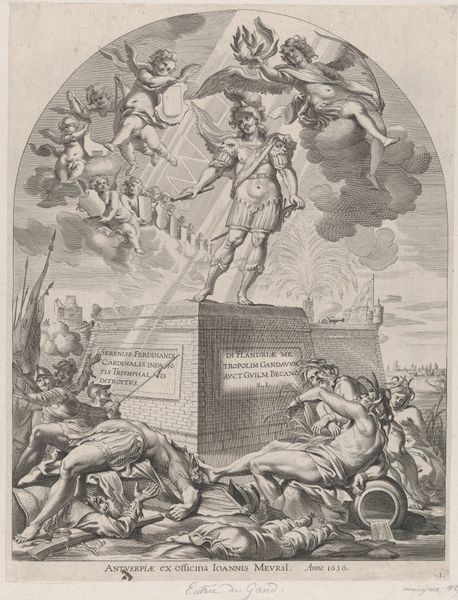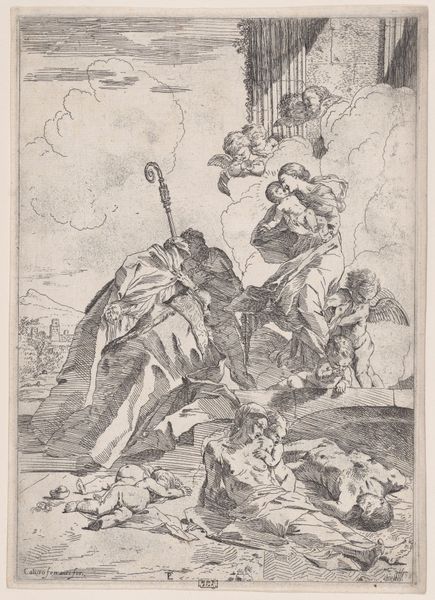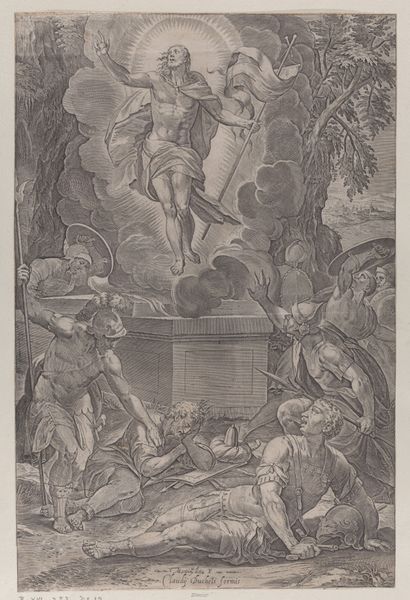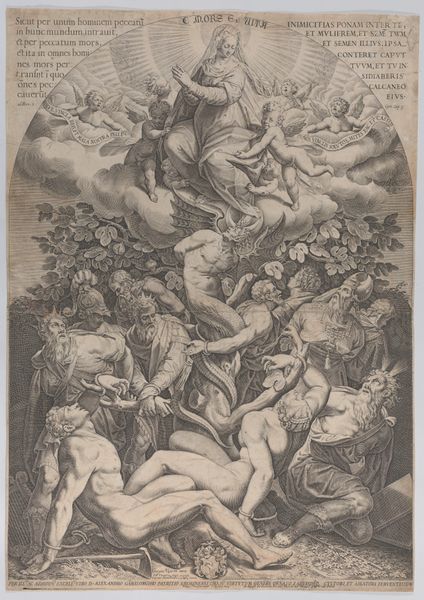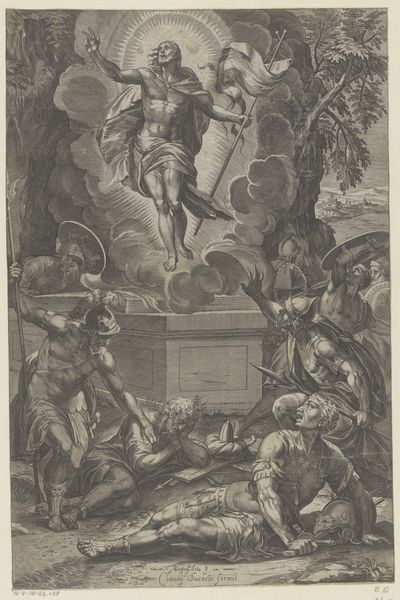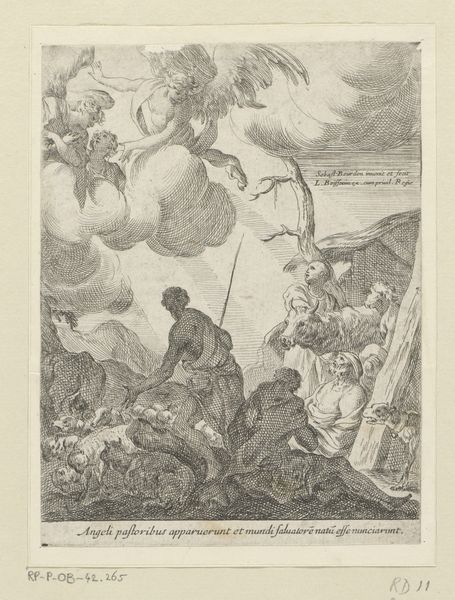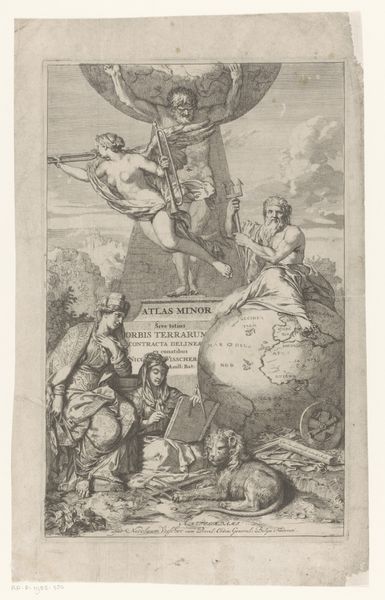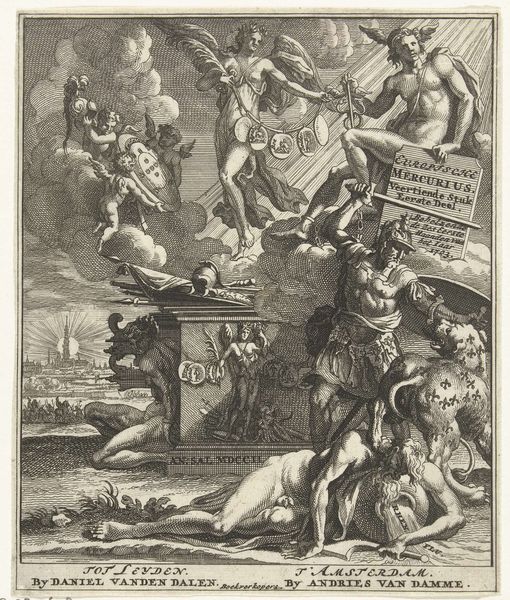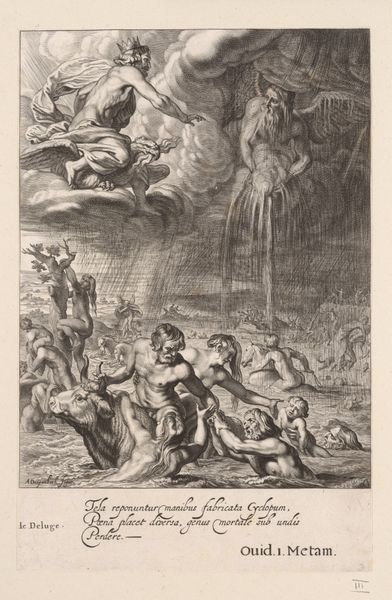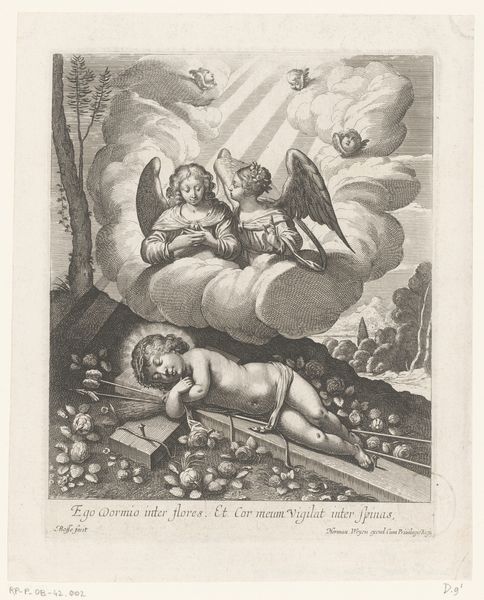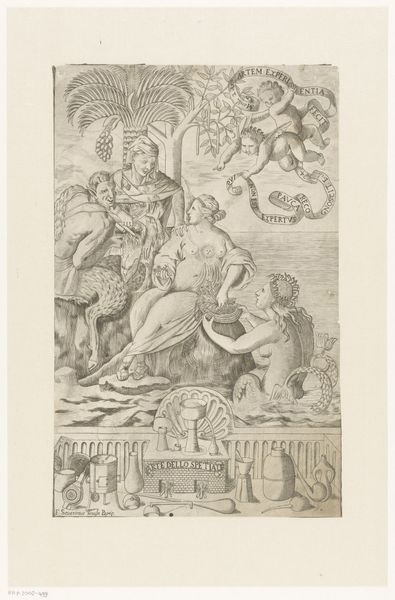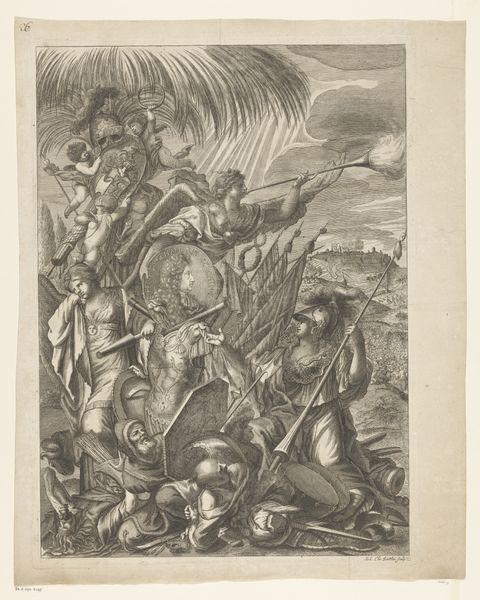
Frontispice met Ferdinand als Mars; intocht van Ferdinand te Gent in 1635 (nr. 1) Possibly 1635 - 1685
0:00
0:00
print, engraving
#
portrait
#
allegory
#
baroque
# print
#
pen sketch
#
figuration
#
history-painting
#
engraving
Dimensions: height 383 mm, width 298 mm
Copyright: Rijks Museum: Open Domain
Curator: Pieter de Jode the Younger probably created this engraving, “Frontispice met Ferdinand als Mars; intocht van Ferdinand te Gent in 1635 (nr. 1)”, sometime between 1635 and 1685. It’s currently held in the Rijksmuseum. Editor: Whoa, this is intense! My first thought? The whole scene just *screams* "triumph of somebody over somebody else". Is that Ferdinand standing on that platform like he’s untouchable? I see a general feel of Baroque grandiosity in here! Curator: Absolutely, and situating this print historically is vital. It’s not just a portrait; it's deliberate political messaging. The depiction of Ferdinand as Mars, the god of war, connects his rule to power, legitimacy, and even divine right within the context of 17th-century European politics. We can see that, the Baroque style really heightens that drama, doesn't it? Editor: Definitely! The cherubs floating up top kinda add a light and airy feeling compared to what’s going on down below with the carnage on the bottom. Also there is a lot going on… Can you give me some of your expertise about this chaos down here. Curator: The defeated figures symbolize Ferdinand’s vanquished enemies. Note how this portrayal echoes a dominant narrative of the era, where power is displayed via visible subjugation, contributing to a very deliberate construction of political and cultural identity. The figures embody what power does in that context. Editor: Hmmm, this reminds me of historical photographs of victorious moments where political leaders appear larger than life, which sort of leads viewers to adopt particular feeling… But this is different, no photography yet so everything feels carefully positioned. Curator: That's it! There's the combination of art and calculated communication. Everything, even the pen strokes serve a function in portraying and amplifying authority. Editor: Makes you wonder about the narratives *we're* constructing today through our own visuals, right? What are *we* valorizing? Curator: Precisely! Understanding these historical constructs is the key to analyzing our present. The artwork invites reflection on power and visual rhetoric, providing invaluable context for discussions about contemporary political discourse. Editor: Totally changes how I see the cherubs too – they're not just cute; they're propaganda! This feels like it could become its own contemporary project on what's been valorized in art for centuries... Fascinating!
Comments
No comments
Be the first to comment and join the conversation on the ultimate creative platform.
